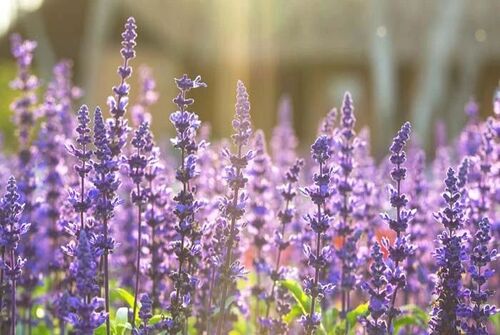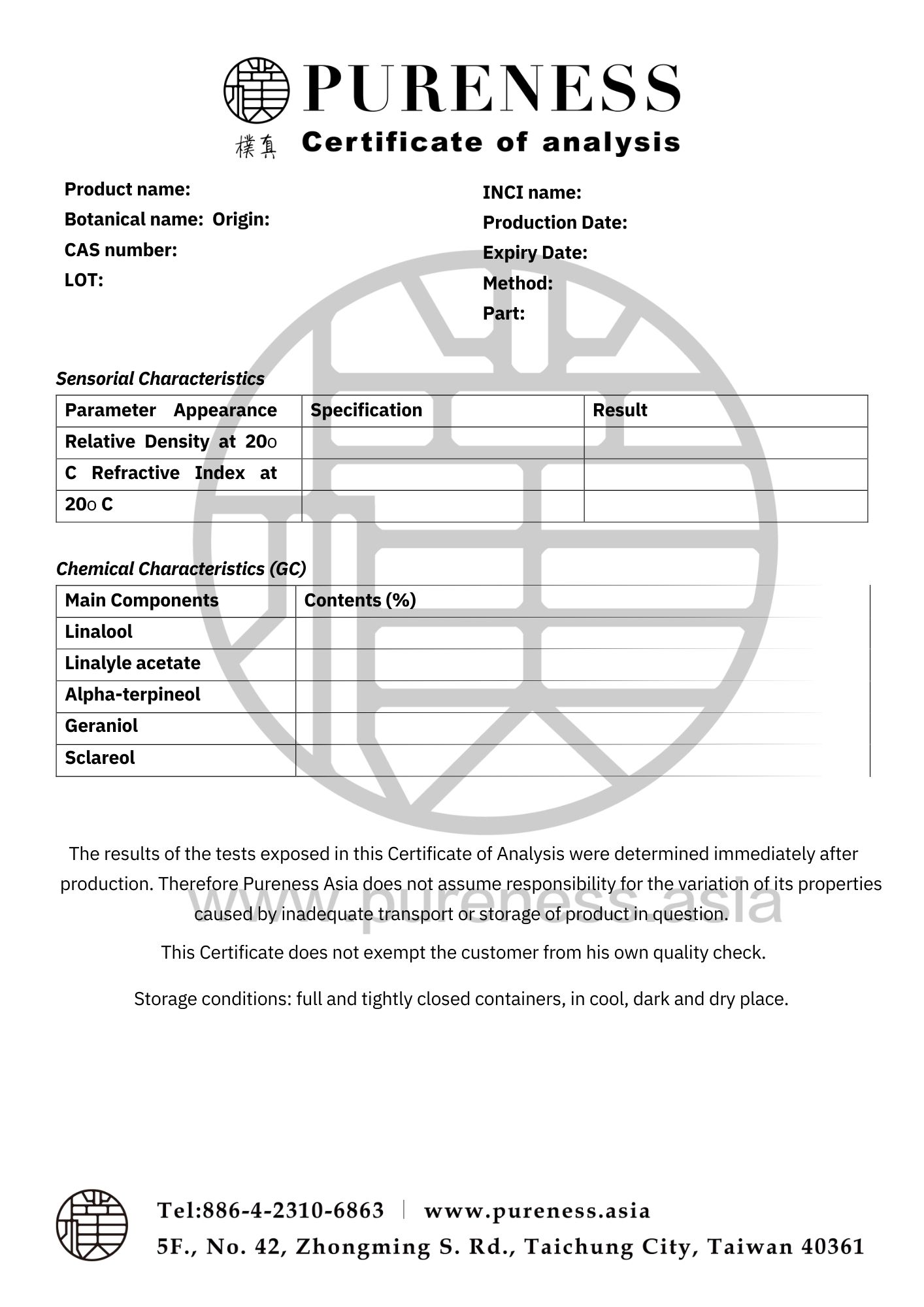
Clary sage
Scientific name|Salvia sclarea
Origin|Hungary
Classification|Herb series
Specifications|500g-25kg Please contact sales for details
Extraction part|Whole plant
Extraction method | Distillation
Plant family|Lamiaceae
Aroma|A calm grassy scent with a hint of bitterness and spicy notes
▎Essential Oil Introduction
Clary sage comes from the Latin word meaning "clear." In medieval Europe, it was used to treat eye ailments, which is why it was also called "See Bith" or "Eye Bith." This perennial herb grows to about 70-120 cm, with heart-shaped, fuzzy leaves and blooms with pale pink, lavender, or white flowers. Native to Southern Europe, it has over 450 species.
Clary sage is sometimes classified as a biennial and other times as a perennial. Its essential oil is extracted from the flower tops and leaves, offering a very unique fragrance that is both fragrant and warm, blending grassy and tea-like aromas.
▎Component Analysis
|Main component: Linalyl acetate
Additionally, there are compounds such as linalool, germacrene-D, β-caryophyllene, sclareol, and α-caryophyllene. The chemical composition of clary sage is quite complex, containing over 250 different components. The primary components are monoterpenols and esters, which are also the main components found in lavender.
Clary sage also contains a rare compound called sclareol, which is a diterpenol. This large molecule is less volatile and uncommon in essential oils. Its molecular structure closely resembles estradiol, a form of estrogen, which is why it is believed to have "phytoestrogenic" effects. These effects may be mediated through the brain's limbic system.
Related species to clary sage include wild sage (S. verbenaca) and meadow sage (S. praetensis), both of which were commonly used in ancient medicine. These plants were used not only for treating eye conditions and aiding digestion but also for brewing beer and flavoring muscat wines.
|Classification by components
1. Linalool and linalyl acetate, e.g., clary sage
2. α- and β-thujone, e.g., Dalmatian sage
3. 1,8-cineole and camphor, e.g., Greek sage, Spanish sage
|Research Validation

▸ In 2010, Seol et al., conducted animal experiments to investigate the antidepressant effects of various essential oils. The results showed that among all the tested oils, clary sage (5%) had the best anti-stress effect, possibly due to its ability to regulate serotonin, dopamine, adrenaline, and GABA receptors.

▸ Research by Sienkiewicz et al. has shown that clary sage is associated with studies on skin wound infections caused by Staphylococcus aureus.
|Raw Material Certifications
To obtain relevant certification information, please contact us on WhatsApp.
▎References
- Geun Hee Seol et al.Antidepressant-like Effect of Salvia Sclarea Is Explained by Modulation of Dopamine Activities in Rats. J Ethnopharmacol. 2010 Jul 6;130(1):187-90
- Monika Sienkiewicz et al.The Effect of Clary Sage Oil on Staphylococci Responsible for Wound Infections. Postepy Dermatol Alergol.2015 Feb;32(1):21-6.
- Jean-Claude Caissard et al. Budzyńska A et al. Extracellular Localization of the Diterpene Sclareol in Clary Sage (Salvia sclarea L., Lamiaceae)
- Lawrence BM (1994) Production of clary sage oil and sclareol in North America. Proc 4th Nyons Int Meet, Dec. 5–7th, Nyons, France: 41–58.
- Werker E, Ravid U, Putievsky E (1985) Glandular hairs and their secretions in the vegetative and reproductive organs of Salvia sclarea and S. dominica . Isr J Bot 34: 239–252.
- Colson M, Perrin A, Derbesy M, Bayle JC, Tanti RM (1985) .L'essence de sauge sclarée (Salvia sclarea L.). Parf Cosm Arômes 66: 53–58.
- Elnir O, Ravid U, Putievsky E, Dudai N (1991). The chemical composition of two clary sage chemotypes and their hybrids. Flav Frag J 6: 153–155.
- Hudaib M, Bellardia M G, Rubies-Autonell C, Fiori J, Cavrini V (2001) .Chromatographic (GC-MS, HPLC) and virological evaluations of Salvia sclarea infected by BBWV-I. Farmacia 56: 219–227.
- Mihalik E, Lehoczki E, Bodor Z, Németh EZ (2005) Photosynthetic and morphological characters of leaves of the annual and biennail Salvia sclarea biotypes. Acta Biol Szeged 49: 161–163.
- Schmiderer C, Grassi P, Novak J, Weber M, Franz C (2008) Diversity of essential oil glands of clary sage (Salvia sclarea L., Lamiaceae). Plant Biol 10: 433–440.
|Some images sourced from the internet. Contact for copyright removal|





